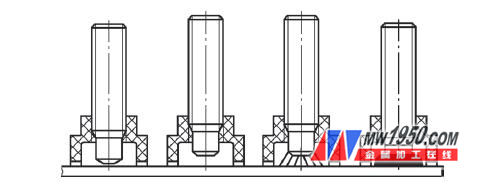ã€Abstract】The large number of applications of stud welding in nuclear power provide a guarantee for the manufacturing cycle. Based on the American Steel Structure Association (AWS) welding standard and the successful practical experience, this paper summarizes various factors affecting the quality of stud welding, and introduces the control points and testing methods of stud quality in the field welding process.
I. Overview
A nuclear power technology adopts the production method of standardized prefabrication and modular construction. The structural modules are mainly used as structural walls, structural slabs, stairs and other auxiliary structures, so that different independent areas and corresponding structures are formed inside the nuclear island and the auxiliary building. Among them, the manner of stud welding is widely used. Stud welding is widely used in the prefabrication process of the nuclear power module, which provides guarantee for modular manufacturing and shortening the prefabrication cycle.
Stud welding (commonly known as “stud weldingâ€) uses special welding equipment to ignite the arc between the stud and the parent metal. When the stud and the parent metal are heated by the arc to a suitable temperature, the special welding gun mechanism is automatically applied. External force, the stud is pressed into the molten pool of the base metal, so that the two reach the atomic bond, forming a connection method of the permanent welded joint. Figure 1 is a schematic illustration of a typical stud welding process.

Figure 1 Drawn arc stud welding with ceramic ring
Second, the analysis of the main points of stud welding control
1. Factors affecting the quality of stud welding
The factors affecting the quality of stud welding are determined by five major aspects: man, machine, material, method and ring. Each large factor can be decomposed into several small factors. The factors are listed and analyzed in the form of fishbone diagram. as shown in picture 2.
2. Cause analysis
(1) Personnel factor During the forming process of the stud welding head, the falling direction of the stud should be kept perpendicular to the workpiece as much as possible. The angle of the skew is kept within 2.5o, which has little effect on the welding quality. If it exceeds this range, it will be Welding quality has a certain impact. If the stud enters the molten pool at an instant, it may cause the stud to be incompletely welded and the liquid metal on the other side to be squeezed, resulting in a decrease in joint quality. When operated manually, the verticality of the stud is largely grasped by the operator and is greatly affected by human factors.
Therefore, all operators engaged in stud welding should carry out the corresponding procedures, welding machine operation training, and should obtain the corresponding qualification certificate covering the work, in order to be qualified for stud welding work.
(2) The material factors are mainly determined by the stud and the parent metal. The required materials should be received in accordance with the relevant procedures and the acceptance is acceptable.
Studs: The choice of studs is mainly in terms of dimensions and materials. Due to the carbon content of the stud itself, the phase mechanical properties of the weld metal after welding are directly determined, so its fluctuation directly leads to fluctuations in the quality of the stud weld.
For more details, please refer to the attachment or the 20th issue of Metalworking (Hot Processing) magazine.
Jinwu Glass Fiber Co., Ltd , https://www.jwglassfiber.com